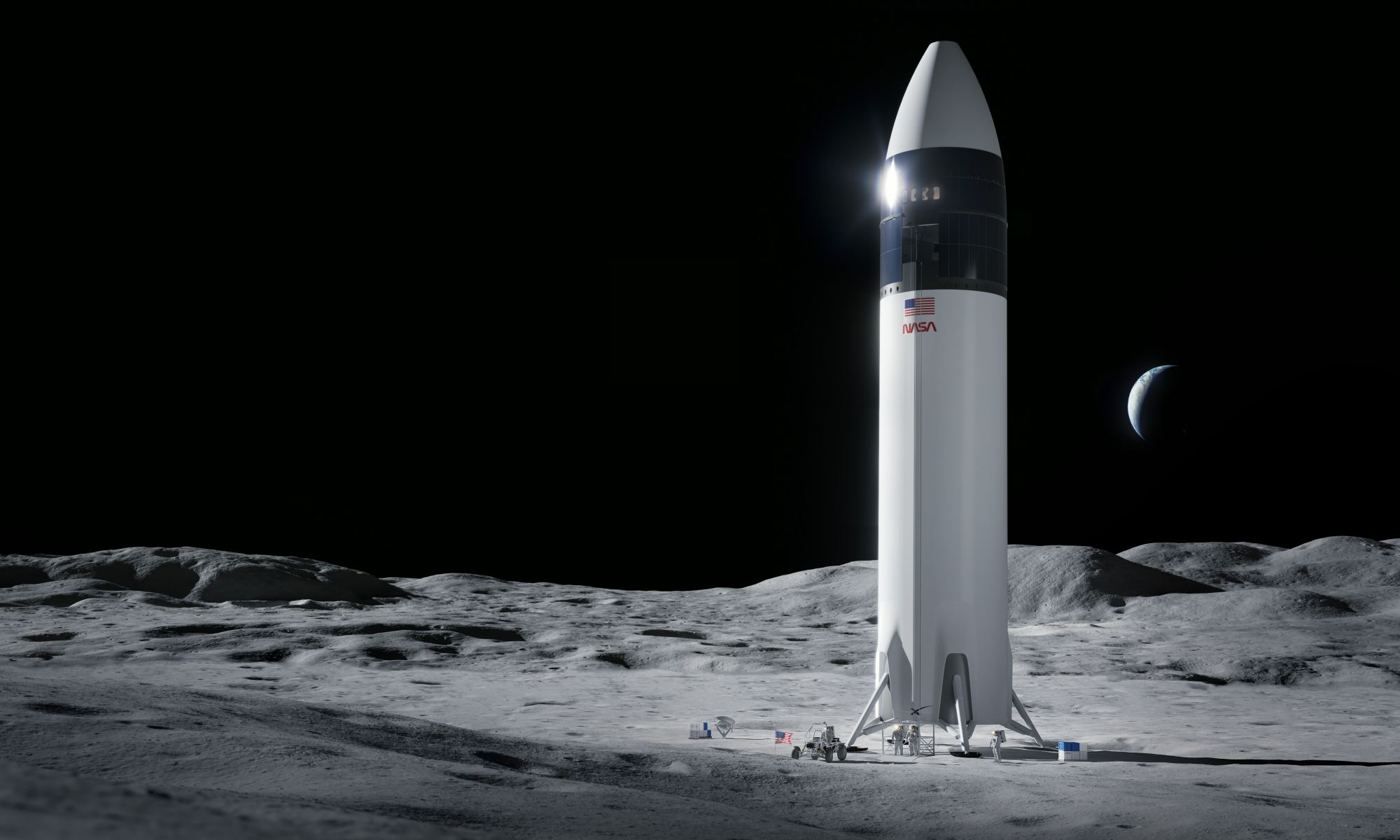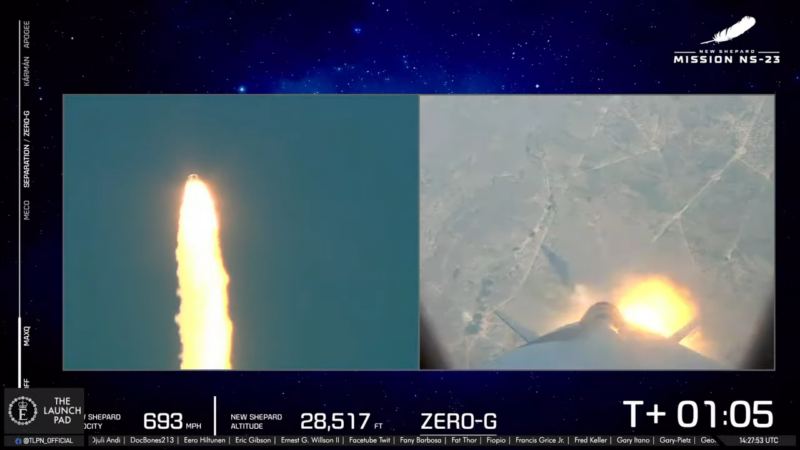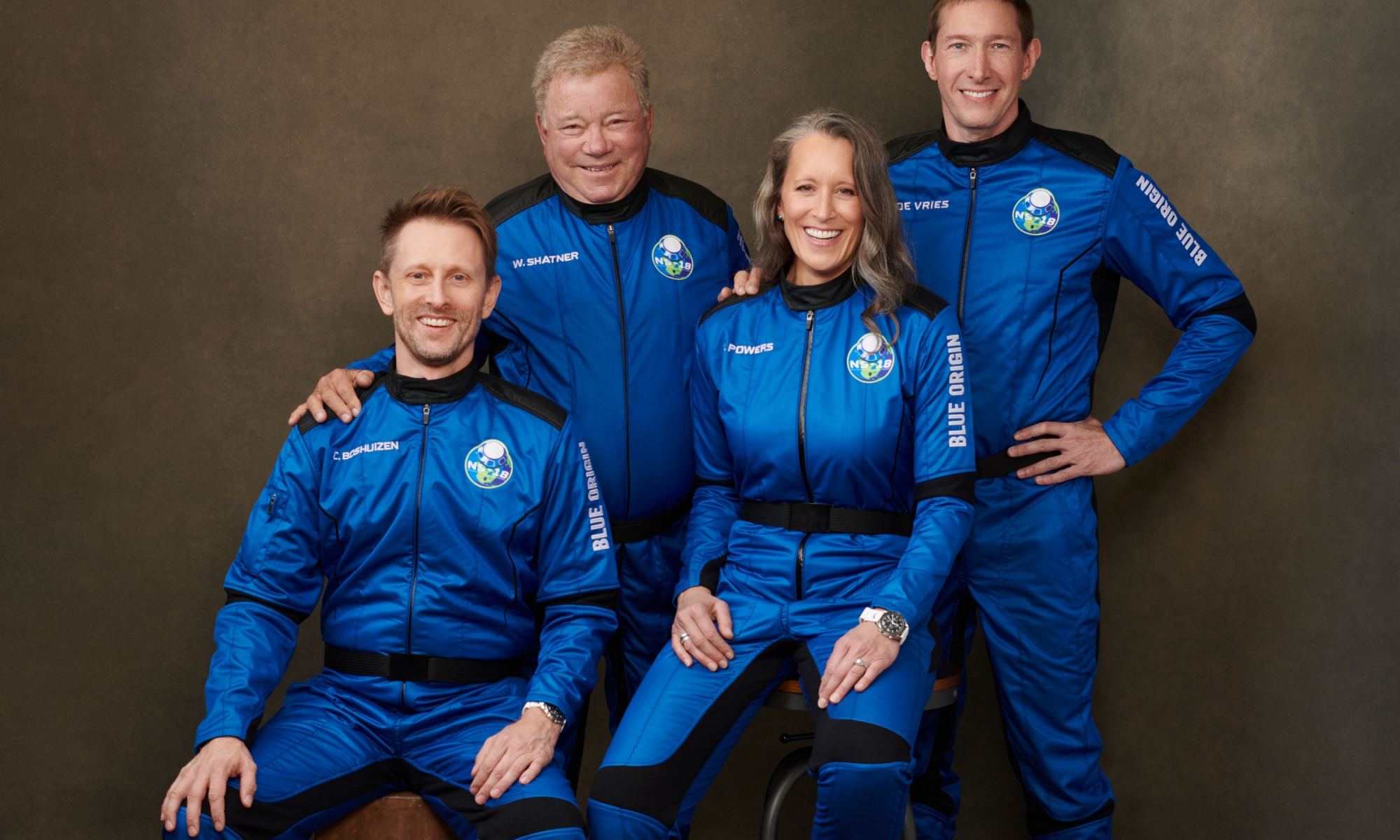Power infrastructure will be critical for any long-term space colony, and one of the most critical pieces of that power infrastructure, at least in the inner solar system, is solar cells. So in-situ research experts were thrilled when Blue Origin, ostensibly a rocket company, recently announced that they had made functional solar cells entirely out of nothing other than lunar regolith simulant.
Continue reading “Blue Origin is Building Solar Cells out of (Simulated) Lunar Regolith”Just Four Robots Could Deploy a Huge Radio Telescope on the Far Side of the Moon

For decades, astronomers have advocated building radio telescopes on the far side of the Moon. This “radio-quiet” zone always faces away from Earth and would provide the perfect location to study a variety of astronomical phenomena that can’t be observed in low radio frequencies from our planet, or even by Earth-orbiting space telescopes. But the costs and logistics of such a project have pushed most of these concepts to the realm of futuristic dreams.
But now a group of astronomers and engineers have worked out a concept for a radio telescope placed on the lunar far side that could be as large as 100 square kilometers across, and it could be deployed from a robotic lunar lander and four two-wheeled rovers.
Continue reading “Just Four Robots Could Deploy a Huge Radio Telescope on the Far Side of the Moon”A New Shepard Exploded. Fortunately, There Wasn’t Anyone on Board
On September 12, Blue Origin New Shepard mission, NS-23, failed just over one minute into an uncrewed flight, forcing the escape system to eject its New Shepard upper stage capsule, which landed safely near the launch site. Several science experiments were being carried onboard with the original flight plan calling for the capsule to reach an altitude of a little more than 60 miles, which is internationally acknowledged as the edge of space. While the flight was uncrewed and the capsule made a successful soft landing after ejecting, the scenario could have been far more ill-favored if the flight had been crewed with tourists.
Continue reading “A New Shepard Exploded. Fortunately, There Wasn’t Anyone on Board”NASA Releases Details on how Starship Will be Part of its Return to the Moon
The path back to the moon is long and fraught with danger, both in the real, physical sense and also in the contractual, legal sense. NASA, the agency sponsoring the largest government-backed lunar program, Artemis, has already been feeling the pain on the contractual end. Legal battles have delayed the development of a critical component of the Artemis program – the Human Landing System (HLS). But now, the ball has started rolling again, and a NASA manager recently reported the progress and future vision of this vital part of the mission to the Institute of Electrical and Electronics Engineers at a conference.
Continue reading “NASA Releases Details on how Starship Will be Part of its Return to the Moon”Alan Shepard’s Daughter Will be Flying on the Next New Shepard Flight
Jeff Bezos has hit a particular stride lately with Blue Origin, the commercial space company he founded in 2000 in the hopes of “building a road to space.” For the sake of fostering interest in the space tourism industry, testing their reusable launch vehicle, and growing his company’s brand, he’s conducting recurring launches with the New Shepard featuring high-profile clientele. At the same time, he aims to make each new launch a record-setting event.
On Nov. 23rd, Blue Origin announced the names of the six people who would fly aboard the New Shepard launch vehicle on its nineteenth flight (NS-19), scheduled for Dec. 9th. Among them is Laura Shepard Churchley, the eldest daughter of astronaut Alan Shepard, the first American astronaut to go to space, the fifth man to walk on the Moon, and for whom the New Shepard launch vehicle is named.
Continue reading “Alan Shepard’s Daughter Will be Flying on the Next New Shepard Flight”Court Turns Down Blue Origin’s Attempt to Prevent SpaceX’s Lander Contract

For months, the commercial space sector has waited for a pivotal case to be resolved. This was none other than the legal action filed by Blue Origin in response to NASA selecting SpaceX to execute the Human Landing System (HLS) contract worth $2.9 billion. This system is a vital piece of the Artemis Program mission architecture, which will be used in the coming years to transport crew and cargo to the lunar surface.
In a recently-announced decision, the U.S. Court of Federal Claims officially shot Blue Origin’s protest down. This puts an end to nearly seven months of legal proceedings and gridlock following SpaceX’s selection back in April. While this means that SpaceX can get back to developing their concept – the Starship HLS – in preparation for the Artemis III missions, it is unclear if that mission will happen on schedule.
Continue reading “Court Turns Down Blue Origin’s Attempt to Prevent SpaceX’s Lander Contract”Blue Origin Announces the “Orbital Reef,” the Space Station they Plan to Build in Orbit
Blue Origin has certainly stepped up its game of late! After stepping down as the CEO of Amazon, Jeff Bezos has made it his personal mission to take the company he founded in 2000 and turn it into a powerhouse of the commercial space sector. Between some high-profile missions involving the New Shepard – which included passengers like Wally Funk, William Shatner, and even himself and his brother – Bezos has also been outspoken about his long-term vision.
Bezos describes this vision as “building a road to space so our children can build the future.” In the latest step towards achieving this, Blue Origin announced a new partnership with Sierra Space to develop a commercial space station in Low Earth Orbit (LEO), known as “Orbital Reef.” This mixed-use space station, which is to be completed by the end of this decade, will facilitate commerce, research, tourism, and facilitate the commercialization of LEO.
Continue reading “Blue Origin Announces the “Orbital Reef,” the Space Station they Plan to Build in Orbit”William Shatner Completes his Trip to Space With Blue Origin
After traveling to the edge of space this week, William Shatner and the crew of the NS-18 mission made it back to Earth safe and sound. This was the second time Blue Origin’s New Shepard launch vehicle flew to space with a crew aboard, and as with the inaugural flight, Blue Origin founder Jeff Bezos decided to enlist some star power! Who better than the man known to millions of fans as James Tiberius Kirk, Captain of the starship Enterprise?
At 90 years of age, the veteran actor of television, film, and stage is the oldest person to fly to space. The previous record was held by 82-year old veteran aviator Wally Funk, who went to space as part of the first crewed flight of the New Shepard on July 20th. Along with his fellow crewmembers, Shatner’s experienced what it’s like to go to space for the first time from the company’s Launch Site One facility in West Texas.
Continue reading “William Shatner Completes his Trip to Space With Blue Origin”Another Flight for New Shepard, No Passengers This Time
Blue Origin has taken some serious steps of late to stay in the commercial space game! Ever since founder Jeff Bezos decided to step down as CEO of Amazon to focus on this brainchild of his, the company has been shaking things up and forging on ahead, hoping to become one of the most competitive and lucrative privately-owned launch services in the world. From the launchpad to the courtroom, they are making their presence felt.
Earlier today, the company completed its 17th mission (NS-17) with the New Shepard launch vehicle, a reusable vertical-takeoff and vertical-landing (VTOL) crew-rated launch vehicle designed to bring small payloads and crews to suborbital altitudes and back again safely. This was also the 8th consecutive time this particular vehicle successfully launched and returned to Earth while carrying some interesting science experiments.
Continue reading “Another Flight for New Shepard, No Passengers This Time”Musk Says That Refueling Starship for Lunar Landings Will Take 8 Launches (Maybe 4)
The fight over who gets to take the Artemis astronauts back to the Moon continues! It all began when NASA announced that they had awarded the contract for its Human Landing System (HLS), the reusable lunar lander that would ferry the Artemis III astronauts to the lunar surface. This decision did not sit well with the other two finalists, Blue Origin and Dynetics, who appealed the decision because NASA was showing “favoritism.”
The Government Accountability Office (GAO) rejected these appeals, which has prompted Blue Origin founder Jeff Bezos to bring out the big guns. In addition to filing a lawsuit in federal court and lobbying Congress, they have also waged a public relations war against SpaceX itself, calling their safety record and into question. In response, Elon Musk took to Twitter to address Blue Origin’s claims and set the record straight.
Continue reading “Musk Says That Refueling Starship for Lunar Landings Will Take 8 Launches (Maybe 4)”







